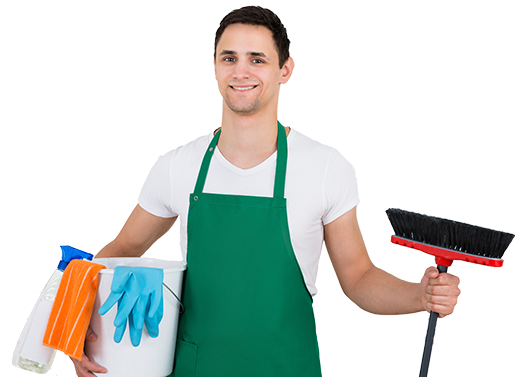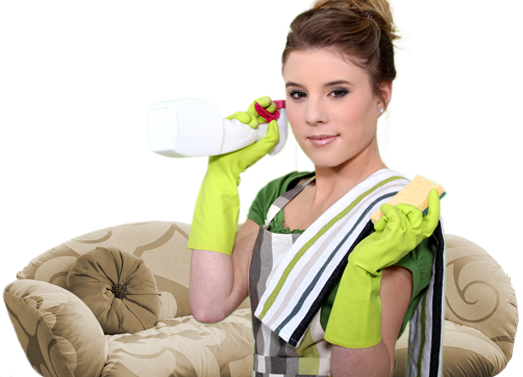The impact of regularly disinfecting and sanitizing surfaces on preventing the spread of infectious diseases like COVID-19
Posted on 28/07/2024
is a topic that has gained significant attention in the wake of the ongoing global pandemic. With the rapid spread of COVID-19, there has been a renewed focus on hygiene and sanitation practices as an effective means of preventing the spread of infectious diseases. In this article, we will explore the importance of regularly disinfecting and sanitizing surfaces in preventing the transmission of illnesses like COVID-19.
Regularly disinfecting and sanitizing surfaces is crucial in preventing the spread of infectious diseases. This is because many viruses and bacteria can survive on surfaces for extended periods, making them potential sources of infection. According to a study by the National Institutes of Health, the COVID-19 virus can last up to three days on plastic and stainless steel surfaces, highlighting the need for regular disinfection and sanitization (1).
By disinfecting and sanitizing commonly touched surfaces such as doorknobs, countertops, and light switches, we can reduce the risk of coming into contact with these harmful pathogens. Additionally, frequent hand washing and using alcohol-based hand sanitizers can further help prevent the spread of infections from contaminated surfaces.
Regular disinfection is an essential measure in controlling the spread of infectious diseases like COVID-19. Studies have shown that regular cleaning with household disinfectants can effectively kill viruses and bacteria on surfaces (2). This makes it vital for individuals to prioritize regular cleaning and disinfection in high-touch areas within their homes and workplaces.
Moreover, public places such as schools, hospitals, and offices must also implement strict cleaning protocols to maintain a clean and safe environment for their occupants. By regularly disinfecting high-touch areas in these settings, we can limit the spread of illnesses between individuals.
On one hand, regular disinfection and sanitization of surfaces are crucial in preventing the spread of infectious diseases like COVID-19. By keeping our surroundings clean, we can reduce the risk of coming into contact with harmful pathogens and protect ourselves and those around us.
However, there may be some downsides to excessive use of disinfectants. Overuse of these products can lead to the development of antibiotic-resistant bacteria, as well as cause harm to the environment (3). Therefore, it is essential to use disinfectants only when necessary and follow proper guidelines for their use.
To ensure effective disinfection and sanitation practices, here are a few tips to keep in mind:
The key takeaway from this discussion is that regularly disinfecting and sanitizing surfaces is crucial in reducing the spread of infectious diseases. By practicing good hygiene habits and implementing proper cleaning protocols, we can limit our exposure to harmful pathogens and create a safer environment for ourselves and others.
In conclusion, regularly disinfecting and sanitizing surfaces play a significant role in preventing the spread of infectious diseases like COVID-19. By understanding the importance of these practices and following proper guidelines, we can effectively control the transmission of illnesses. However, it is also crucial to use these products responsibly to avoid potential negative impacts. Let us all do our part in maintaining a clean and healthy environment for everyone. Stay safe and stay healthy.
The Importance of Disinfecting and Sanitizing Surfaces
Regularly disinfecting and sanitizing surfaces is crucial in preventing the spread of infectious diseases. This is because many viruses and bacteria can survive on surfaces for extended periods, making them potential sources of infection. According to a study by the National Institutes of Health, the COVID-19 virus can last up to three days on plastic and stainless steel surfaces, highlighting the need for regular disinfection and sanitization (1).
By disinfecting and sanitizing commonly touched surfaces such as doorknobs, countertops, and light switches, we can reduce the risk of coming into contact with these harmful pathogens. Additionally, frequent hand washing and using alcohol-based hand sanitizers can further help prevent the spread of infections from contaminated surfaces.

The Effectiveness of Regular Disinfection
Regular disinfection is an essential measure in controlling the spread of infectious diseases like COVID-19. Studies have shown that regular cleaning with household disinfectants can effectively kill viruses and bacteria on surfaces (2). This makes it vital for individuals to prioritize regular cleaning and disinfection in high-touch areas within their homes and workplaces.
Moreover, public places such as schools, hospitals, and offices must also implement strict cleaning protocols to maintain a clean and safe environment for their occupants. By regularly disinfecting high-touch areas in these settings, we can limit the spread of illnesses between individuals.
The Pros and Cons
On one hand, regular disinfection and sanitization of surfaces are crucial in preventing the spread of infectious diseases like COVID-19. By keeping our surroundings clean, we can reduce the risk of coming into contact with harmful pathogens and protect ourselves and those around us.
However, there may be some downsides to excessive use of disinfectants. Overuse of these products can lead to the development of antibiotic-resistant bacteria, as well as cause harm to the environment (3). Therefore, it is essential to use disinfectants only when necessary and follow proper guidelines for their use.
Tips for Effective Disinfection
To ensure effective disinfection and sanitation practices, here are a few tips to keep in mind:
- Use EPA-approved disinfectants that are effective against a wide range of viruses and bacteria.
- Follow instructions on product labels for proper use and contact time.
- Clean visibly dirty surfaces before applying disinfectant.
- Wear gloves while cleaning and avoid touching your face during the process.
- Properly ventilate the area after cleaning to allow for proper drying.

Takeaways
The key takeaway from this discussion is that regularly disinfecting and sanitizing surfaces is crucial in reducing the spread of infectious diseases. By practicing good hygiene habits and implementing proper cleaning protocols, we can limit our exposure to harmful pathogens and create a safer environment for ourselves and others.
In Conclusion
In conclusion, regularly disinfecting and sanitizing surfaces play a significant role in preventing the spread of infectious diseases like COVID-19. By understanding the importance of these practices and following proper guidelines, we can effectively control the transmission of illnesses. However, it is also crucial to use these products responsibly to avoid potential negative impacts. Let us all do our part in maintaining a clean and healthy environment for everyone. Stay safe and stay healthy.



